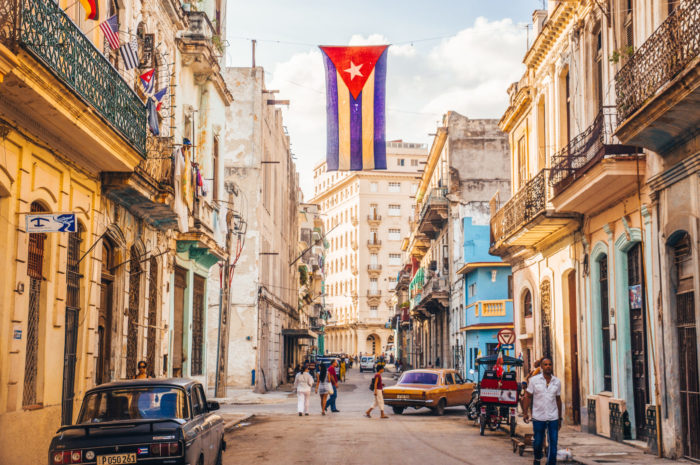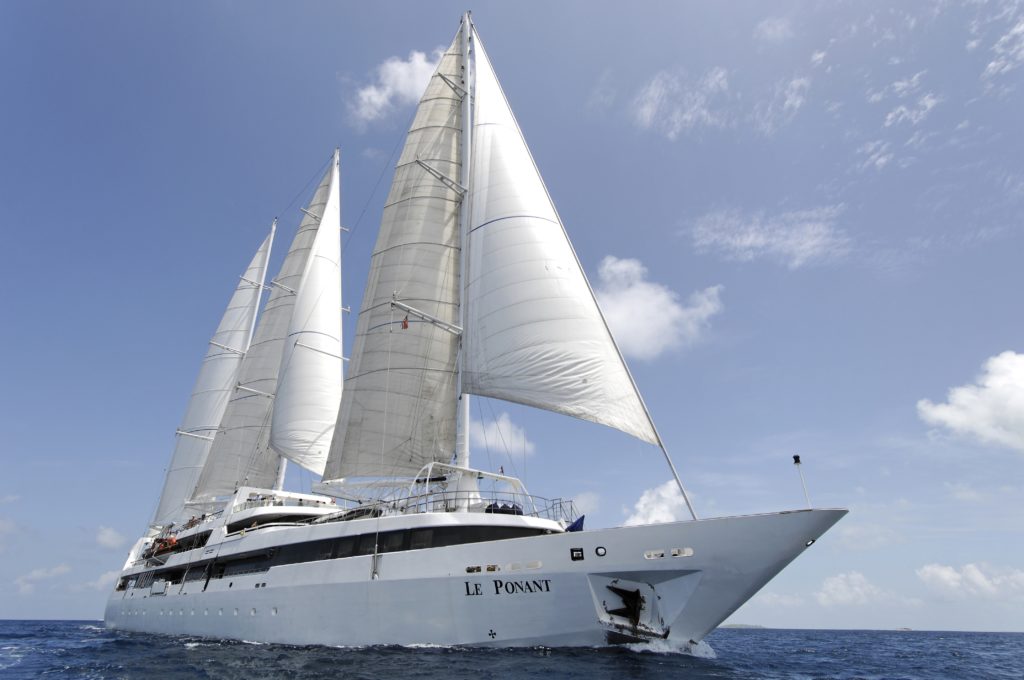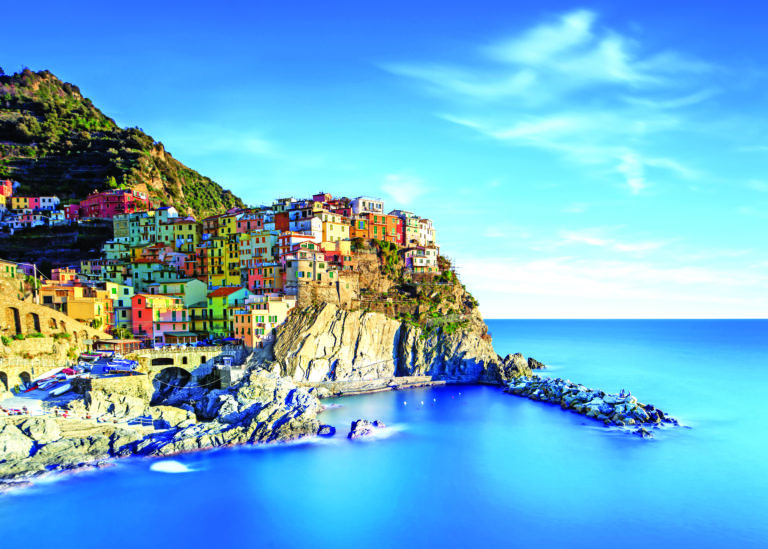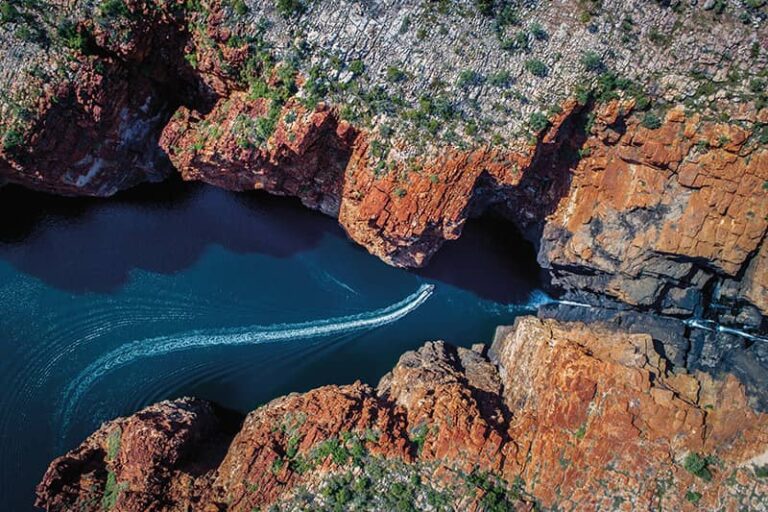We fly into Antonio Maceo International Airport in Santiago de Cuba from Miami. It’s Cuba’s second-largest city and dates back to a small village established by Spanish conquistador Diego Velazquez in 1515. The capital of Spanish Colonial Cuba throughout much of the 16th century, it was also the birthplace of the 1950s Cuban Revolution. The city is also known for its thriving cultural life, with strong Afro-Cubano influences and a significant role in Cuban musical genres including salsa, son and trova. Music seems to be everywhere here, the hometown of many famed Cuban musicians including Compay Segundo and other members of the Buena Vista Social Club.
Tauck has specially created the ‘People-to-People’ Cuba Cruise, an opportunity to share insights and discoveries including meeting some of the city’s musicians and exploring Santa Ifigenia Cemetery, the final resting place of many noted Cubans, including 19th-century revolutionary José Marti and Fidel Castro, whose tombs are guarded by a contingent of Cuban soldiers.
Parque Cespedes is a vibrant square on the site of the city’s original settlement, adjacent to its oldest existing home, and is now a museum. Here you’ll get a close-up look at the Cuban Revolution with a visit to the site considered its birthplace – Moncada Barracks, where young brothers Fidel and Raul Castro led an ill-fated attack on a government barracks in 1956. There are bullet holes that have been preserved on the exterior of the building. The Castillo de San Pedro de la Roca (also known as Castillo del Morro) is an iconic stone citadel that has guarded Santiago’s harbour from pirates and other threats since its completion in 1700. After more than 60 years of construction, this is where you will enjoy a sunset champagne toast before boarding the Le Ponant to begin your cruise, with a welcome reception and dinner on the ship.
Around Cuba
As you cruise Cuba’s coastal waters and spend a lazy day at sea sailing westward along Cuba’s southern coast, bound for the port of Casilda for a visit to Trinidad, you can attend lectures and commentary from Tauck directors and enjoy the simple art of relaxing as the coastline floats past.
After cruising the entire morning and into the afternoon, the ship docks at the port of Casilda for a visit to the city of Trinidad. Founded early in the 16th century, the city’s fortunes rose and fell with those of the sugarcane industry in the late 18th and 19th centuries. The city and nearby Valle de los Ingenios (Valley of the Sugar Mills) has been declared a UNESCO World Heritage Site. The historic squares, plazas and cobblestone streets reflect the past wealth from sugar. The Plaza Mayor, flanked by the Palacio Brunet, is emblematic of the city’s golden age, as is the neoclassical-style Palacio Cantero, home to its municipal history museum. Here, you’ll have opportunity to meet local artists in their studios.
The next morning, take the chance to travel outside Trinidad to the Valle de los Ingenios to explore its valleys where over 50 sugarcane mills once operated, supported by the forced labour of more than 30,000 slaves who worked in the mills or in the plantations surrounding them. This vast UNESCO site conserves the ruins of many sugar mills, where you’ll see traces of barracones (slave quarters) and other structures at plantations like Manaca Iznaga, with its preserved owner’s house and 147-foot bell tower built in 1816.
Le Ponant arrives the following morning in Cienfuegos, dubbed the “Pearl of the South”. Founded in 1819 by French and Spanish immigrants and known as a haunt of pirates in its early days, Cienfuegos – which translates to “one hundred fires” – became wealthy as a trading port during the 1800s. No other city in the Caribbean can lay claim to as large a collection of Neoclassical buildings from the 19th and 20th centuries.
Exploring Cienfuegos’s historic centre, which is also a UNESCO World Heritage Site, you’ll find the finest existing example of early 19th-century Spanish Enlightenment urban planning. As a side trip, you can visit the local Union of Writers and Artists of Cuba social project to meet the community. Or, you can join an excursion to Playa Girón on Bahia de Cochinos (the Bay of Pigs), the infamous landing site for the unsuccessful invasion by CIA-sponsored Cuban exiles attempting to overthrow the Castro government in April, 1961. The Museo Girón, which chronicles the invasion, is worth visiting.
Island hop
We arrive early the following morning at La Isla de la Juventud (Island of Youth), a tear-shaped island about 100 kilometres off Cuba’s southern coast. Back in the 1500s and 1600s, the island’s coves, caves and beaches saw many skirmishes between Spanish ships and privateers like Henry Morgan and Sir Francis Drake. In the 20th century, the island was the site of a prison – Fidel Castro and Che Guevara were both held here after a failed revolution in the 1950s – and later a Communist university established by Castro in the 1970s.
Today, the island is one of Cuba’s hidden gems, highly popular with divers, possessing a wealth of natural beauty and protected wildlife. At Punta Francés Marine National Park on the island’s southern coast, accessible only by sea, you’ll join a local naturalist for an excursion through the mangroves, and have an opportunity for snorkelling before returning to the ship for dinner.
Havana Bound
Relax for a day at sea as Le Ponant sails around the western tip of Cuba to the capital. Bidding adios to our captain and crew, we stop at El Morro, the iconic stone fortress that has guarded Havana’s harbour since the 16th century. We make our way to Finca Vigía (Lookout Farm) in San Francisco de Paula where Ernest Hemingway made his winter home from 1939 to 1960. On a walk around the preserved house, which can be viewed through windows and doors, you’ll see the author’s 9000-volume library and his yacht, Pilar. Continue along the coast to the little fishing village of Cojímar, which inspired Hemingway to write The Old Man and the Sea, with its memorial to “Ernesto”.
After overnighting in Havana, the final day of cultural adventuring begins on a guided walking tour through Habana Vieja, the city’s nearly 500-year-old heart, now a pedestrian-only UNESCO World Heritage Site. Your guide will explain the city’s architecture as well as historic restoration efforts, and how Cubans are playing an important role in preserving and revitalising the area. Whether you’re a smoker or not, it’s fascinating to visit a cigar factory for a firsthand look at the production of one of Cuba’s most popular exports: hand-rolled cigars. After lunch at a local paladar, head over to what was once Cuba’s Presidential Palace, which now houses Havana’s Museum of the Revolution.
Lined with pastel-coloured houses, and 1950s cars, old Havana, where salsa music plays in dance clubs and in the streets, is intoxicating.
When & Where
The seven-night cruise between Santiago de Cuba and Havana starts from $12,490 per person/twin share, and includes one night in Miami; return flights from Miami; onboard food and beverages; all gratuities; shore excursions; and two nights in Havana. Cruises depart December 13 and 22, 2018, with the second itinerary operating in reverse. Departures in January, 2019 are also available.
To book, contact your travel agent or Tauck Australia on 1300 732 300 or visit tauck.com.au.








